The Ultimate Beginner’s Guide to Teenage Skincare
As teenagers transition from childhood to adulthood, their skin often undergoes significant changes. This period can bring about a myriad of skin concerns, from acne and oiliness to dryness and sensitivity. Navigating the skincare landscape can be daunting, especially for beginners. This guide aims to demystify the essentials of teenage skincare, providing practical tips and advice for maintaining healthy skin.
Understanding Teenage Skin
The Changes in Skin During Teenage Years
During puberty, hormonal fluctuations lead to increased oil production, which can result in acne and other skin issues. At this age, the skin may become:
- Oily: Increased production of sebum (skin oil) can lead to clogged pores.
- Acne-prone: Acne can range from mild to severe, often requiring different treatment approaches.
- Sensitive: Hormonal changes may make skin more reactive to products.
- Dry or Dehydrated: Some teens may experience dryness or dehydration due to environmental factors or product choices.
Types of Teenage Skin
Understanding your skin type is crucial for effective skincare. Teenage skin can generally be categorized into four types:
- Oily Skin: Characterized by excess shine and enlarged pores.
- Dry Skin: Flaky, rough texture with potential tightness.
- Combination Skin: A mix of oily and dry areas, particularly oily in the T-zone.
- Sensitive Skin: Prone to redness, itching, or burning when exposed to certain products.
Building a Skincare Routine
Establishing a consistent skincare routine is key to managing and maintaining healthy skin. Here’s a step-by-step guide:
Step 1: Cleansing
A good cleanser is the foundation of any skincare routine. Cleansing helps remove dirt, oil, and makeup, preventing clogged pores.
- For Oily Skin: Look for foaming or gel cleansers with salicylic acid or benzoyl peroxide, which can help treat and prevent acne.
- For Dry Skin: Opt for creamy or hydrating cleansers that won’t strip natural oils.
- For Sensitive Skin: Use a gentle, fragrance-free cleanser to avoid irritation.
How to Cleanse:
- Use lukewarm water to wet your face.
- Apply a small amount of cleanser and gently massage it in circular motions.
- Rinse thoroughly and pat dry with a clean towel.
Step 2: Exfoliation
Exfoliation helps remove dead skin cells, which can prevent clogged pores and promote skin renewal.
- Frequency: Exfoliate 1-2 times a week, depending on your skin type.
- Types: Physical exfoliants (scrubs) should be used with caution; chemical exfoliants (like AHAs and BHAs) can effectively slough away dead skin without harsh abrasives.
Step 3: Toning
Toning helps balance the skin’s pH and can remove any residue left after cleansing.
- For Oily Skin: Consider a toner with witch hazel or tea tree oil.
- For Dry Skin: Use hydrating toners with ingredients like rose water or aloe vera.
Step 4: Moisturizing
Even oily skin needs moisture. A good moisturizer will hydrate the skin and fortify its barrier.
- For Oily Skin: Look for non-comedogenic, oil-free gels or lotions.
- For Dry Skin: Opt for thicker creams containing oils or butters (like shea butter or jojoba oil).
Step 5: Sun Protection
Protecting your skin from UV rays is vital, even for younger skin.
- SPF 30 or higher: Look for broad-spectrum sunscreens.
- Daily Use: Apply every morning, even on cloudy days, and reapply every two hours when outdoors.
Common Teenage Skin Concerns
Acne
Acne is the most common skin concern among teenagers. It can occur due to:
- Hormonal changes
- Excess oil production
- Clogged pores
- Bacteria
Tips for Managing Acne:
- Consistency is Key: Stick to your skincare routine.
- Don’t Pick or Squeeze: This can lead to scarring and further irritation.
- Consult a Dermatologist: For severe cases, professional treatment may be necessary.
Oily Skin
Oily skin can be uncomfortable but can often be managed with the right products and routine.
- Use Oil-Free Products: Make sure all your skincare and makeup products are oil-free.
- Blotting Papers: These can help absorb excess oil throughout the day.
Dry Skin
Dry skin can result from environmental factors, skin products, or genetics.
- Hydrate: Drink plenty of water and consider using a humidifier in dry environments.
- Gentle Cleansers: Avoid harsh soaps, and incorporate nourishing ingredients into your routine.
Sensitive Skin
Sensitive skin requires special attention and care.
- Patch Test: Always test new products on a small area first to ensure they won’t cause a reaction.
- Fragrance-Free: Opt for products that are free from fragrances and harsh chemicals.
The Role of Diet and Lifestyle
Nutrition for Healthy Skin
What you put into your body can have a significant impact on your skin. Here are some dietary tips:
- Stay Hydrated: Water is essential for maintaining skin moisture.
- Balanced Diet: Include plenty of fruits and vegetables for vitamins and antioxidants.
- Limit Sugars and Processed Foods: These can contribute to inflammation and acne.
Lifestyle Factors
Certain lifestyle choices also affect skin health:
- Sleep: Aim for at least 7-9 hours of quality sleep per night to allow your skin to repair.
- Stress Management: High stress can exacerbate skin conditions, so incorporate relaxation techniques like yoga or meditation.
Makeup Considerations
If you choose to wear makeup, opt for non-comedogenic products that won’t clog your pores. Always remove makeup thoroughly before bed.
Frequently Asked Questions (FAQs)
How often should I change my skincare products?
It’s best to give products at least 4-6 weeks to work before making changes. However, if you experience irritation, discontinue use immediately.
Can I use multiple acne treatments at once?
Be cautious with combining treatments, as this can lead to irritation. Consult a dermatologist for personalized advice.
Are natural products better for my skin?
While natural products can be beneficial, they can also cause reactions. Always perform a patch test before fully incorporating a new product into your routine.
Is it too early to start using anti-aging products?
It’s generally advisable to focus on basic skincare in your teens. Anti-aging products can be introduced in your late twenties to early thirties.
What should I do if my skin reacts badly to a product?
Discontinue use immediately and consult a dermatologist if symptoms persist or worsen.
Conclusion
Embarking on a teenage skincare journey can be overwhelming, but with the right information and products, you can achieve healthy, glowing skin. Start with the basics—cleansing, exfoliating, moisturizing, and protecting your skin—and remember to listen to your skin’s unique needs. With time, patience, and consistency, you’ll be well on your way to a successful skincare routine. Always consider consulting a dermatologist if you have specific concerns or persistent issues, as they can provide tailored advice tailored to your skin type and needs.
References
- Dermatology Textbooks – For foundational knowledge on skin anatomy and disorders.
- Journal of Clinical and Aesthetic Dermatology – For insights on teenage skin care and treatment options.
- Skincare Product Certifications – Research on non-comedogenic and sensitive skin formulas.
With this guide, I hope you feel empowered to take control of your skin health, paving the way for a lifetime of confidence and comfort in your own skin. Happy skincare!

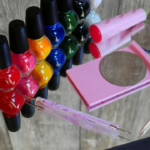



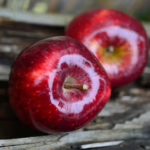





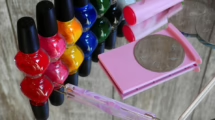


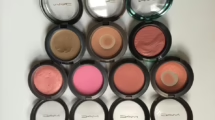



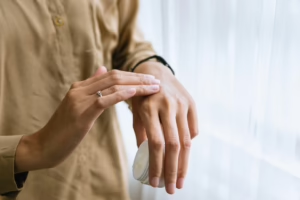







Add Comment